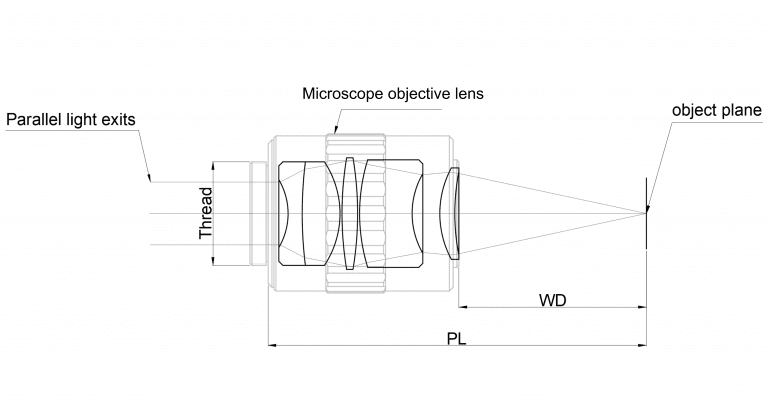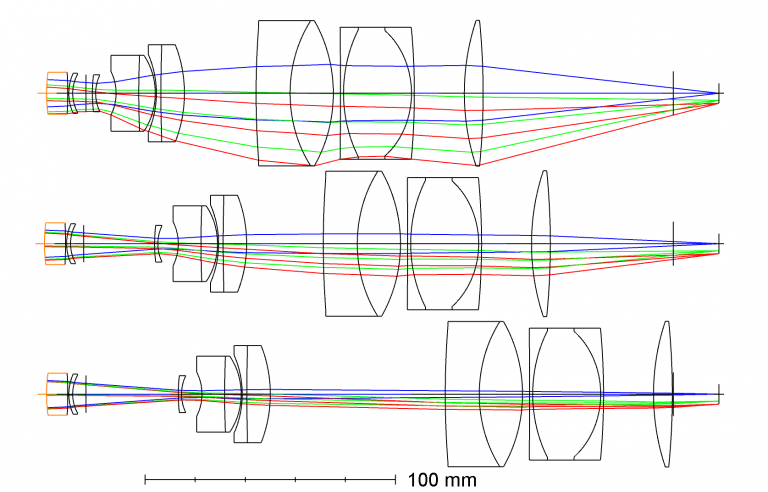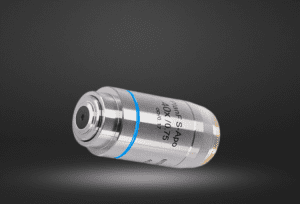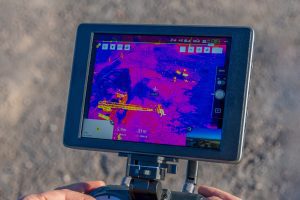Key Takeaways
- Ruggedized imaging lenses are designed for harsh environments and are used in industrial, surveillance, military, and machine vision applications.
- Key considerations include environmental requirements (IP rating, temperature range, vibration, and shock resistance), optical specifications (focal length, aperture, coatings, and performance), and lens housing materials.
- Fixed magnification lenses, such as telecentric lenses and microscope objectives, offer high precision, while variable magnification lenses, like fixed focal length and zoom lenses, provide flexibility.
- Avantier’s ruggedized lenses are reliable, durable, and suitable for demanding applications.
Ruggedized Imaging Lenses
Ruggedized imaging lenses are specialized lenses designed with ruggedized construction. Therefore, imaging lenses represent a complex and nuanced element within imaging systems. These lenses are commonly used in demanding industrial, surveillance, security, military, and machine vision applications where standard lenses might fail due to exposure to harsh environments such as dust, high humidity, extreme temperatures, vibration, and mechanical shock.
Key considerations when designing ruggedized imaging lenses
- Environmental Requirements:
- IP Rating: Ensure the lens has a sufficient IP rating to protect against dust and moisture.
- Temperature Range: Ensure the lens can operate within the required temperature range.
- Vibration and shock: Ensure the lens can survive the vibration and shock without damage or affecting lens quality
- Optical Specifications:
- Focal Length: Ensure the lens meets focal length spec.
- Aperture: Fixed apertures are simpler and more robust. Thus, they are often preferred.
- Coatings: Anti-reflective, scratch-resistant, and hydrophobic coatings are beneficial for maintaining optical clarity and durability.
- Performance: ensure the as-built lens meets the resolution requirements
- Lens Housing:
- Housing Material: Metal housings are used for better durability. Aluminum housing is cheaper and less weight. Copper housing is non-magnetic.
- Lens mount: ensure the lens meets the mechanical interface requirements
- Design Constraints
- Budget Constraints: Consider the total budget and find the cost-effective solution for lens design and manufacturing.
- Mechanical Constraints: Consider the dimension requirements (e.g. total length, outer diameter), total mass, flange focal distance, etc.
Avantier offers a wide range of ruggedized lenses that are both reliable and budget-friendly, making them suitable for use in industrial, security, and other demanding applications. Moreover, these lenses feature robust housings, fixed apertures, and anti-reflective coatings.
Advantages of using ruggedized imaging lenses
- Reliability: The moving parts are eliminated, and fewer moving parts mean less risk of mechanical failure.
- Durability: Enhanced resistance to environmental factors and physical stress.
- Consistency: Fixed aperture ensures stable imaging performance (resolution and depth of field), crucial for automated systems and long-term deployments.
Types of Fixed Magnification Lenses
- Telecentric Lenses: Telecentric lenses are crucial for high-precision measurements within imaging systems. These lenses are specialized and come with advanced optical capabilities, making them ideal for applications requiring accuracy. Selecting a telecentric lens is often perceived as more challenging than choosing a fixed focal length lens. Learn more about Telecentric Lenses.
- Microscope Objectives: Microscope objectives are designed for imaging very small objects, often at magnifications exceeding 1X. These fixed magnification optics are optimized to function effectively at a specific Working Distance (WD), which is usually smaller compared to other imaging lenses. Learn more about Microscope Objective Lenses.

Types of Variable Magnification Lenses
- Fixed Focal Length Lenses: Fixed focal length lenses, also known as prime lenses, offer a specific magnification level and field of view without the ability to zoom. They are prized for their optical purity, often having fewer elements than zoom lenses, resulting in sharper, less distorted images. These lenses are ideal for situations where a high magnification or field of view is needed, such as in photography, videography, and various imaging applications where consistency and optical performance are paramount. Learn more about Fixed Focal Length Lenses.
- Zoom lenses: Fixed focal length lenses maintain a constant angle of view (AFOV), while zoom lenses can vary their focal length and, consequently, their AFOV. Zoom lenses offer unparalleled flexibility in applications where constant adjustments are needed, although they may not always provide the highest resolution. However, if the field of view (FOV) doesn’t need frequent adjustments during imaging, a fixed focal length lens is often the better option. In cases where changing FOV is necessary, stepper motors are employed to swiftly and precisely adjust the focal length. Learn more about Zoom lenses.

The Importance of Ruggedized Imaging Lenses
In conclusion, ruggedized imaging lenses are indispensable components in a wide array of industries and applications, providing unparalleled reliability, durability, and consistency in challenging environments. Avantier, with its wide range of ruggedized lenses that feature robust construction, fixed apertures, and advanced coatings, offers a cost-effective and dependable solution for demanding imaging needs. Whether it’s high-precision measurements with telecentric lenses, imaging small objects with microscope objectives, or the flexibility of zoom lenses, Avantier provides a comprehensive selection to meet diverse imaging requirements. By prioritizing key considerations such as environmental resilience, optical performance, and design constraints, Avantier ensures that ruggedized lenses deliver exceptional results, making us a trusted choice for industrial, security, and other critical imaging applications.
GREAT ARTICLE!
Share this article to gain insights from your connections!







